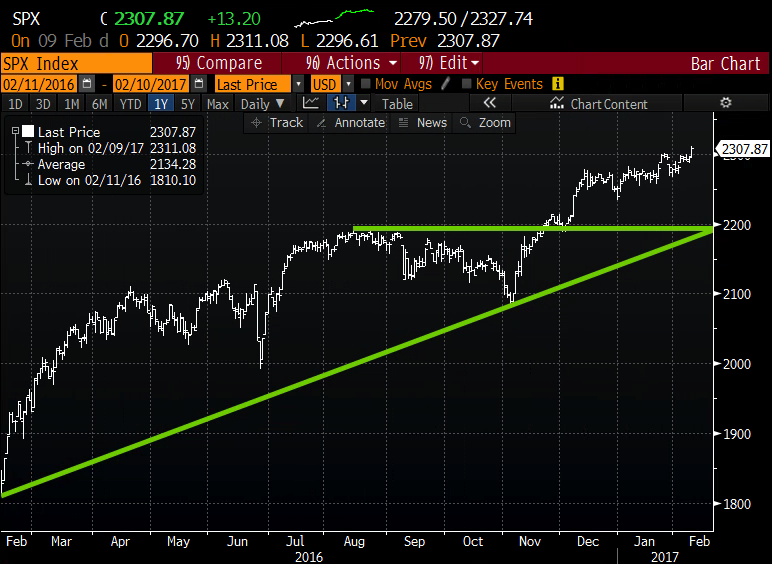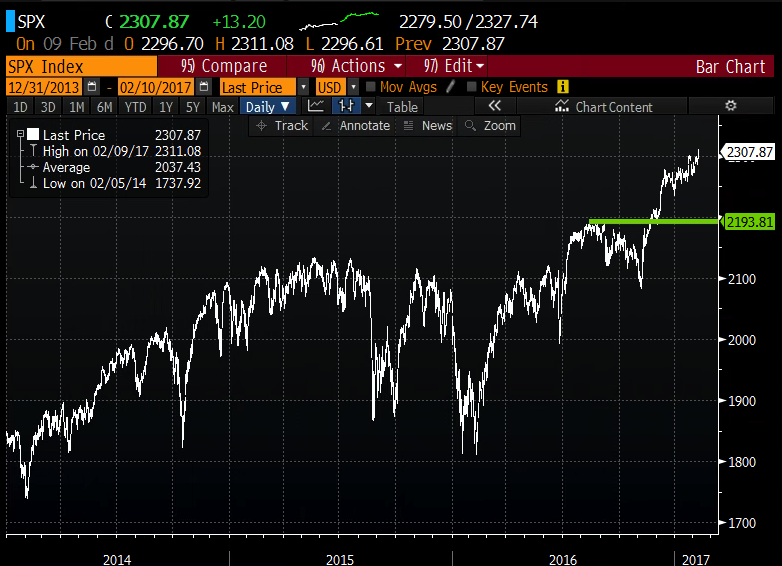Last night on CNBC’s Fast Money we had two great guests, first Tom Lee, the founder of Fundstrat Global, who has been one of Wall Street’s most bullish strategists, who is having a hard time to be uber bullish here given the high levels of positive market sentiment, and his belief that we are likely to see lower prices before we close at high levels on the year, watch here. Tom through out a stat that is worth repeating, explaining historically how U.S. markets have performed in the first six months of a new year after presidential election year, “27 out of 29 times the market has been down during that period, with the median decline of 7%”. Tom does not think this is the time to be aggressive adding to U.S. equity holdings, despite seeing higher highs in the second half of the year.
Second, technician Sven Henrich, recently highlighted the repeat of a pattern that we have seen over the last couple years at highs in the stock market. The combination of persistent low volume after the markets quick gains, expanding P/E multiples and volatility compression, all make him nervous about the sustainability of yesterday breakout, in fact in the last couple years it has led to the exact opposite, watch here.
It’s hard though to look at the one year chart from the February 2016 lows and see anything other than a very constructive pattern, a series of higher highs and higher lows, with fairly obvious near term support at 2200, the intersection of the uptrend and the November breakout level:

So a 5% pullback to 2200, and a hold at those levels, at support, maybe in many ways the exact thing to regain the sort of momentum needed for a sustainable breakout of the recent consolidation.
Which is reinforced by the price action in the SPX since the start of 2014, a period that the S&P 500 (SPX) has risen 25%. The index had gotten much of its upward momentum when achieving new highs by first breaking lower and then V reversing, followed by a low volume consolidation, multiple expansion and a compression of volatility, which ultimately would lead to the next break lower, but ultimately new highs. You get the point, during that period we have had six peak to trough sell-offs ranging from 5 to nearly 15%:

In many ways, convicted bulls should be rooting for a quick decline to 2200ish, to shakeout some weak hands, remind investors that complacency is not exactly their friend in a bull market, especially one as old as this, with tremendous geo-political risk and the possibility of changing interest rate and U.S. dollar regime.
The point here, you are very likely to get a shot to buy the SPX at lower levels at some point in the next few months. Even if everyone is expecting it.